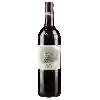
Producta VignoblesNoblesse du Pecharmant
In the mouth this red wine is a powerful with a nice balance between acidity and tannins.
This wine generally goes well with poultry, beef or veal.
Taste structure of the Noblesse du Pecharmant from the Producta Vignobles
Light | Bold | |
Smooth | Tannic | |
Dry | Sweet | |
Soft | Acidic |
In the mouth the Noblesse du Pecharmant of Producta Vignobles in the region of Bordeaux is a powerful with a nice balance between acidity and tannins.
Food and wine pairings with Noblesse du Pecharmant
Pairings that work perfectly with Noblesse du Pecharmant
Original food and wine pairings with Noblesse du Pecharmant
The Noblesse du Pecharmant of Producta Vignobles matches generally quite well with dishes of beef, veal or game (deer, venison) such as recipes of tanjia, osso buco or obelix's boar leg in the oven.
Details and technical informations about Producta Vignobles's Noblesse du Pecharmant.
Discover the grape variety: Cabernet_Dorio
Intraspecific crossing between the limberger and the dornfelder realized in 1971 by Bernard Hill of the Research Institute of Weinsberg in Germany. It can be found in Germany, Belgium and Switzerland, but is little known in France. Note that the cabernet-dorsa has the same parents.
Informations about the Producta Vignobles
The Producta Vignobles is one of of the world's great estates. It offers 74 wines for sale in the of Bordeaux to come and discover on site or to buy online.
The wine region of Bordeaux
Bordeaux, in southwestern France, is one of the most famous, prestigious and prolific wine regions in the world. The majority of Bordeaux wines (nearly 90% of the production Volume) are the Dry, medium and Full-bodied red Bordeaux blends for which it is famous. The finest (and most expensive) are the wines of the great châteaux of Haut-Médoc and the right bank appellations of Saint-Émilion and Pomerol. The former focuses (at the highest level) on Cabernet Sauvignon, the latter on Merlot.
The word of the wine: Vintage scale
Complex system of classification of the communes of Champagne according to the value of the grapes which are produced there. In other regions, hierarchical situation of the productions classified by various authorities.














